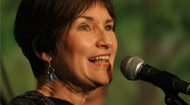 It’s true. You can even by MY record producer, or at least an honorary one. All it takes is some money. But before you label me a total mercenary, read on…
It’s true. You can even by MY record producer, or at least an honorary one. All it takes is some money. But before you label me a total mercenary, read on…
You may have noticed these days the indie record/music scene is almost as big as the non-indie scene – if not in terms of dollars, then certainly in terms of the number of artists. In fact, there are probably more independents than there are acts signed to major labels.
Sharing isn’t caring
The Internet played a large part in this, of course. Suddenly everyone was illegally sharing and no one was buying, and labels would only sign sure moneymakers, so artists began making albums independently – i.e., paying to do it themselves.
But the indie scene has actually been around a heck of a lot longer than the Internet. I like to say, jokingly, or semi-jokingly, that at one time, it used to be called the folk scene.
Folk pioneers
That’s where my musical roots are. My old band Stringband has been called a pioneer of the indie record scene. What that means is we just couldn’t get any label to sign us all those eons ago. Most of the majors in Canada then were US subsidiaries, aiming at the big commercial US market, and they all told us we were too folky and too Canadian. So we started our own label.
A generous fan funded our first album, but we didn’t want to ask him for help for the next one, so we borrowed an idea that was floating around but hadn’t become that common: we asked fans to send us $5 upfront, and we’d use the funds to make the album and then mail them a copy. It worked! We did our next two albums that way. A number of other folk acts followed suit, and that model of doing things has become commonplace in the indie music scene.
Crowd pleaser
Now they call it crowdsourcing; we just called it asking fans to help. In fact, for our third album, I got the bright idea to call it Thanks to the Following, and we printed all the supporters’ names in tiny font starting on the front cover and almost completely covering the back.
If you’re a musician and decide to go this route, there are websites that can help you, such as http://www.kickstarter.com/, http://www.gofundme.com/and others. Or you can do what I and many musicians do: contact your mailing list, and tell the fans you’re making a new CD.
Full support
Create multiple levels of support – e.g., see my fundraising page – and offer various perks. For example, my top level is $1000, for which a patron gets 10 signed CDs, 2 free tickets to the CD launch, a free house concert in their home, and – yes – an honorary producer credit on any song of their choice.
So “honorary producer” may not be quite like twiddling the dials or telling the drummer to go easy on the high hat, but some fans are tickled to become record producers this way. And you can always invite them to watch a recording session, which they may find fascinating – or boring, depending on how many takes you end up doing!










